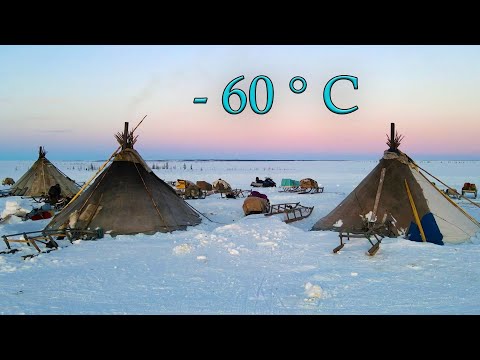
#### Introduction
The vast, unforgiving landscapes of the Ural Mountains and the expansive tundra of Russia are home to one of the world’s most resilient communities—the North Nomads. These indigenous peoples have adapted to some of the harshest conditions on earth, where temperatures plummet below freezing for months on end during winter. This article delves into a detailed exploration inspired by a comprehensive documentary that captures the essence of their winter lifestyle, survival strategies, and profound connection with nature.
#### The Harsh Winter
Winter in the Ural Mountains and adjacent tundra is not merely a season but a formidable challenge that shapes every aspect of nomadic life. The temperature can dive as low as -50°C (-58°F), and daylight becomes a scarce commodity. In this extreme environment, survival is about resilience and deep-rooted knowledge passed down through generations.
#### Traditional Knowledge and Lifestyle
Nomadic tribes such as the Nenets, Khanty, and Mansi people have roamed these icy expanses for millennia. Their survival hinges on traditional knowledge that includes understanding weather patterns, ice navigation, and the behavior of reindeer—their most precious resource. Reindeer not only provide transport across the vast snow-laden terrains but also serve as crucial sources of food, clothing, and materials for building shelters called “chums,” similar to yurts.
During winter, families gather in these chums where stories, traditions, and warmth are shared amidst bitter cold winds outside. Their diet predominantly features reindeer meat alongside fish from frozen rivers, supplemented by wild berries and mushrooms harvested during the brief summer months.
#### Socio-cultural Aspects
The documentary reveals not just survival tactics but also vibrant cultural expressions that persist despite environmental hardships. Festivals like “Reindeer Herder’s Day” provide rare opportunities for different nomadic groups to come together to celebrate their heritage through games such as reindeer racing and lassoing.
Shamanism plays a significant role in their spiritual lives where shamans act as mediators between humans and spirits of nature—guiding communities with wisdom believed to ensure safety and prosperity.
#### Modern Challenges
While traditional practices form an integral part of their identity, modern challenges are reshaping nomadic life significantly. Climate change emerges as a formidable threat; unpredictable weather patterns disrupt traditional migration routes while melting ice poses risks for both safety and food resources.
Additionally, socio-economic pressures push younger generations toward urban areas seeking education and employment opportunities detached from their ancestral lifestyles. This cultural shift threatens the continuity of traditional knowledge essential for surviving these harsh environments.
#### Conservation Efforts
Recognizing these challenges, various initiatives aim at preserving both the natural environment crucial for nomadic survival as well as their cultural legacy. Documentary films play an essential role in this regard—they do not only educate global audiences about these unique lifestyles but also help garner support for conservation efforts aimed at sustaining both culture and ecology.
#### Conclusion
The full film on North Nomads’ life during winter across Russia’s Ural mountains and tundra paints a picture deep with contrasts—where bitter cold spells meet warmth within community bonds beneath chum shelters; where ancient traditions confront modern realities; where every day is a testament to human endurance across time. By capturing such extremities through cinematic storytelling we gain invaluable insights into not just surviving but thriving within nature’s own terms—an eternal lesson from Russia’s North Nomads.
